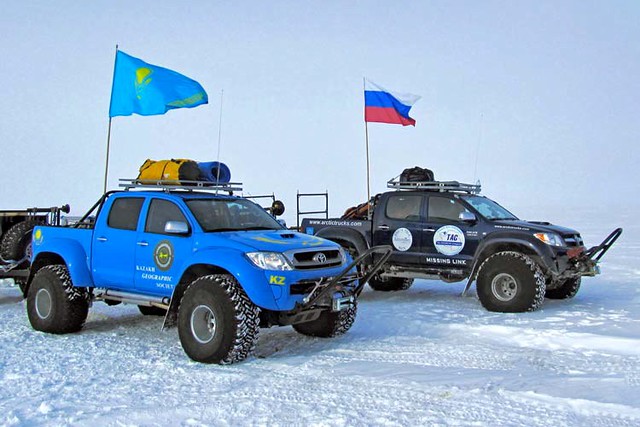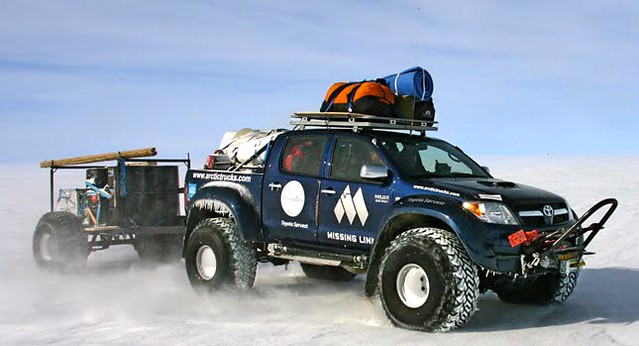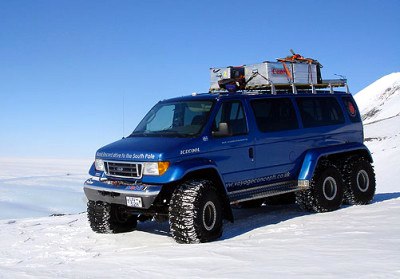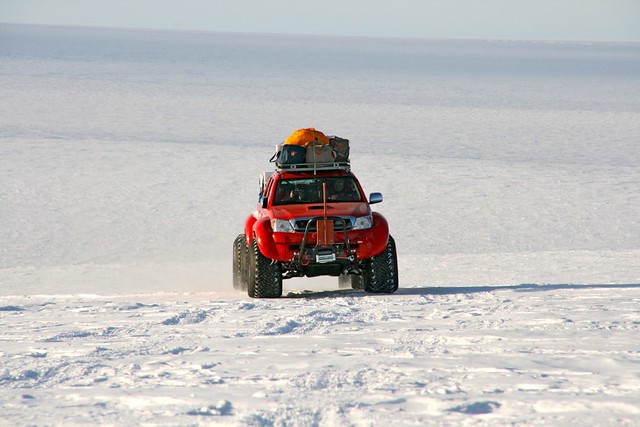Great point to bring up and one of the worst mistakes one can make when choosing traction for snow or mud - too wide. Wide is good for asphalt, but not for snow.
This is somewhat true, but also somewhat false.
Lets just say how wide, or how narrow, will affect your traction.
If I were to use an analogy...lets say you can have soccer cleats or basketball sneakers...and you had to play basketball on a hard court with soccer cleats, you'd slide all over the place because your cleats could not sink into the hard surface for traction...they skitter across the top and you slide all over the place and twist your ankle, etc.
Then, you put on the basketball sneakers, and go play soccer on a wet field. The smooth rubber soles slide over the wet grass without traction, as they have no tread elements to sink into the turf for traction...and you slide all over the place and twist your other ankle, etc.
Now, consider that your tire tread elements are like those cleats. If the surface is soft ENOUGH, they do sink in and get traction...but, if the surface is too hard...they do not. The MORE they sink in, the MORE traction you can get.
When on deep fresh snow, a paddle wheel tread type can grab the ridges of snow and paddle you through it all.
As the snow is progressively harder and harder packed, those large tread elements sink in progressively less.
When the snow is packed too hard to push the tread in, it skitters over it instead of biting.
NOW, it comes down to the size of the tread element, and, the weight pushing it down into the packed snow.
So, a narrower tire concentrates the weight on a smaller area, increasing the psi at the point of penetration for each given tread block.
A smaller tread block in turn also concentrates its weight into a smaller area to also increase penetration.
A SPIKE for example, or tire stud, is an extreme example of this...it concentrates the weight on the point to increase the penetration dramatically.
After you finally find a combination that gives penetration...you then need to look at the ability of that POINT to be able to brace against and be used to move the rig forward. IE: IS one point enough to move the rig?
How many DO you need to have sunk in TO be able to move the rig?
And that gets, again, back to how hard it is, and its resistance when pushed back against, etc.
Too many spikes, and its "bed of nails" effect...the weight is too distributed, and the penetration is too shallow...so you either get penetration, but the cumulative grip is too small, or you don't even get penetration.
If you have the correct number of spikes - you get both penetration and sufficient leverage from those penetration points
So, for a particular weight rig and a particular tread pattern and a particular snow density/hardness and depth...any combination of wide or narrow treads MIGHT work best.
As far as ice or really hard pack goes...every one knows a narrow runner like on a sled will slide more easily than a fat toboggan will - even though the toboggan "floats" better.
So if the narrow runner slips more easily, how does it get more traction? (It doesn't)

The answer is that the larger surface area off the toboggan provides more TOTAL friction than the small surface area of the sled's runners. BOTH generate heat from friction, and both melt the ice and snow to aid in their sliding along...but, the larger surface area, even with lower psi loading, can still generate more traction.
If you were to add tread to the bottom of the toboggan, and to the bottom of the sled's runners...the toboggan would STILL go slower down the hill, and, may not even slide.
This again gets back to the OVERALL and cumulative impact of the available traction contact patch.
So, while the wider tire MIGHT have less traction in snow...it sometimes has MORE traction.
If the rig is going very fast, like a rally racer, etc...the rig might need snow or slush to pile up against the sidewall in a power slide to build enough resistance to allow a change in direction.
A narrow tire WILL sink down further all else being equal, and might be able to maximize that side piling.
On the other hand, when braking, most racers in loose terrain don't use anti-lock brakes because they also need the stuff to pile up in FRONT of the tire to help stop...whereas anti-locks prevents that, and actually can lengthen stopping distances.
So, there are rigs designed for traveling through snow...and, other than rally cars, when they fit, the fattest tires that DO fit are what they have on. Part of that is BECAUSE they will have better flotation, and be less likely to sink down and get STUCK.
The treads used therefore take advantage of surface ridge piling effects, so that the tread pattern allows the snow to be compacted by the tire into ridges that the tread elements can brace against.
If there is soft snow over ice...there's no traction to sink down TOO...you need to use the deformable soft snow for traction, and avoid sinking down.
After that...its all a question of degree...for the weight of the rig and the width of the tire and its diameter, and the size of the tread elements and the compactability of the snow, etc...wider might be better, narrower might be better, etc. Its not one size fits all.
And so forth...so many variations of what might be best for a particular winter situation that we'd probably need to learn Inuit terms to describe all the types of snow that might be there, etc. (IIRC, they have over 200 words for snow...)

So, yes, if you are rally racing on ice....you use skinny tires...but, if you look at the rally guys, they increase the contact patch as the snow softens...they don't ONLY run pizza cutters no matter what if there's snow...they chose the combination of contact patch and contact element penetration and need to cut into the substrate.
Examples of a fat tread working better in snow:
Notice these are not pizza cutters, and, they seem to have snow traction?
Think toboggan with tread vs sled runners with tread....sometimes fatter works better in the snow....and, yes, TOO fat, or, TOO skinny, doesn't work as well.








